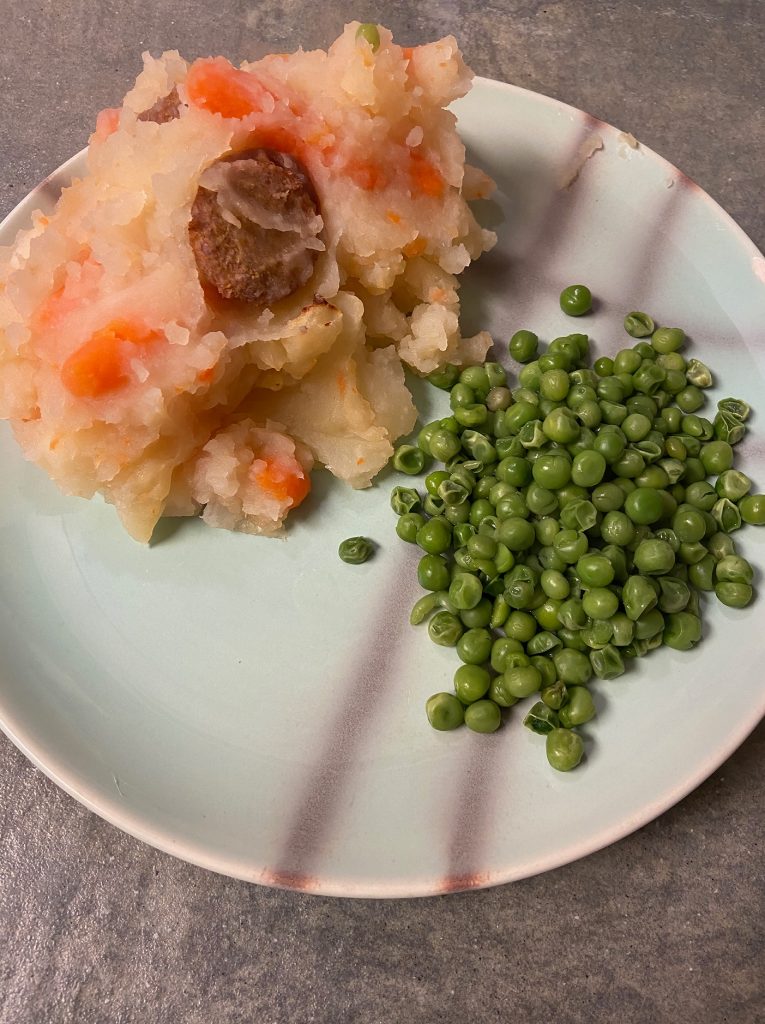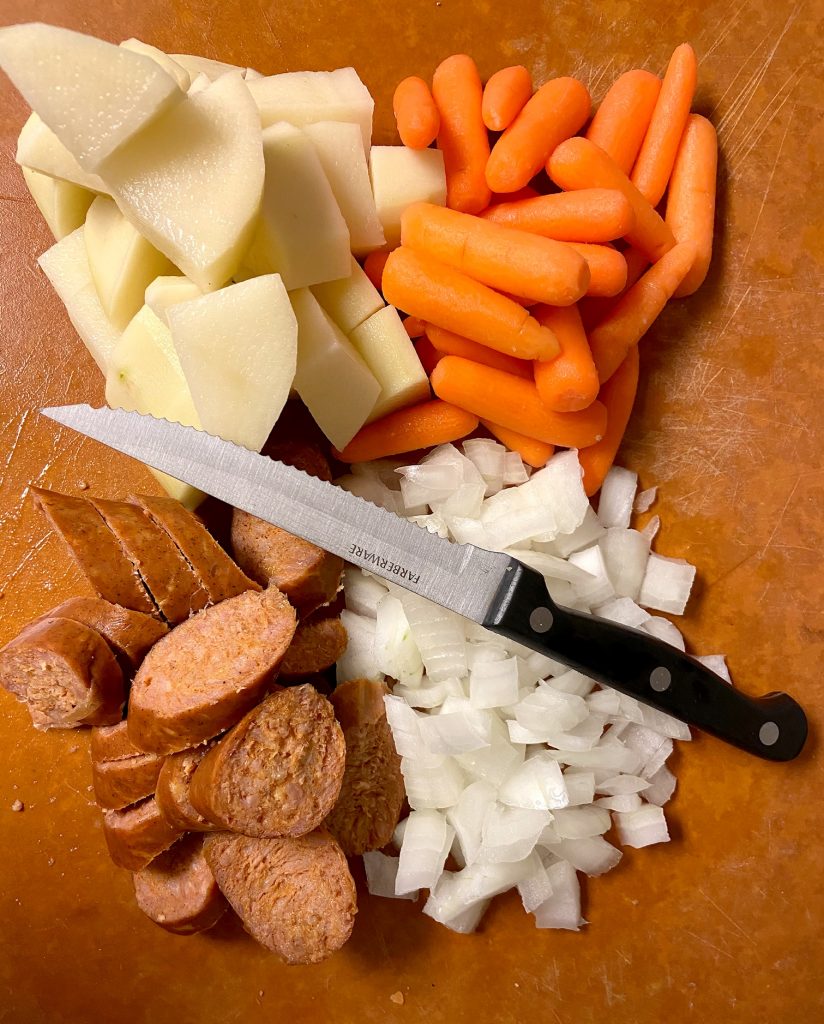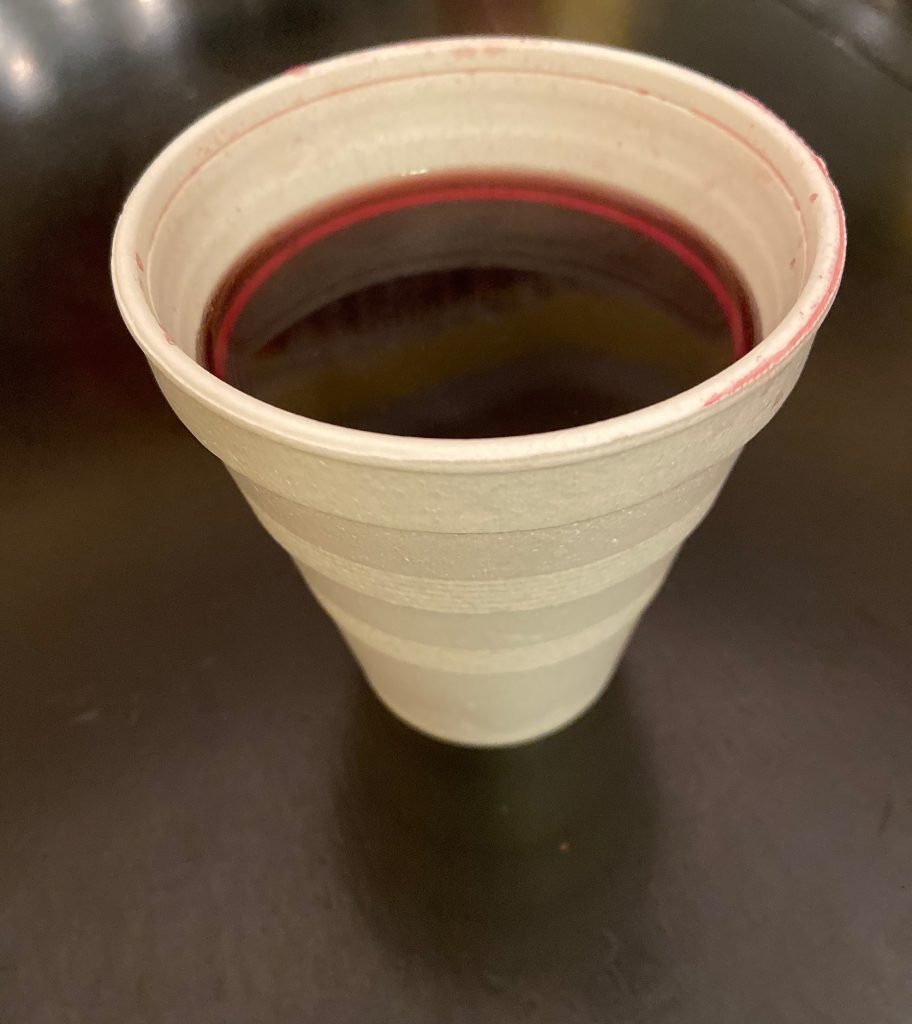Now that winter has set in with a vengeance, it’s time to start cooking hearty meals that warm you from the inside out. One of my winter favorites is a traditional Dutch dish called hutsput, a dish with a history.
Hutsput is a product of the siege of Leiden during the Eighty Years War, also known as the Dutch War of Independence. Most Americans probably aren’t too familiar with this revolution, but it had several causes. Two of the biggest causes were taxation and resentment toward Catholic Spain’s insistence that the Protestant Low Countries (the Netherlands, Belgium, and Luxembourg) become Catholic. The conflict lasted from 1586 to 1609 and then resumed a decade later and lasted until 1648 – yeah, whoever named the war probably wasn’t a mathematician.
[adrotate banner=”14″]
The Netherlands is famous for its many dykes, and they played a pivotal role in the siege. In 1574, the Spanish army besieged Leiden. The leader of the revolt, William of Orange, promised to relieve the city by breaching the dykes and flooding the low-lying land where Spanish troops camped.
The city was in desperate circumstances; thousands had died of starvation during the siege, and another 8,000 died of a plague that hit the city. Here is where the legend gets more interesting than the actual history.
William destroyed the dykes as promised, but the anticipated flood didn’t happen. Easterly winds kept pushing the sea water back toward the ocean. However, a hurricane hit about the same time and pushed water from the Atlantic Ocean across the plains surrounding Leiden, allowing the rebel fleet to sail toward the city and force the Spaniards to retreat.

Hutsput can be served with a green salad or green peas. 
The basic ingredients for Hutsput include potatoes, carrots, onions, and sausage 
A steaming cup of bishop will warm you up on a cold night.
Following the Spanish retreat, city residents scoured the abandoned encampments, looking for any food that might have been left behind. According to the legend, a young orphaned boy, Cornelius Joppenszoon, found a pot of vegetable stew made from parsnips, carrots and onions that he took back to feed the hungry city. That vegetable stew is today known as hutsput, one of the national dishes of the Netherlands.
I learned to make hutsput from my Dutch mother-in-law. Her recipe included sausage as well as vegetables, so it’s a complete one-pot meal. While the 16th century recipe called for parsnips, potatoes began to be substituted in the 19th century, and now, they are the usual base of the dish.
While I don’t make hutsput often (trying to cut the carbs), it will appear on our table at least a couple times each winter along with the Dutch version of mulled wine, bischopswijn, or bishop’s wine in English. My husband’s family just refers to the beverage as bishop.
[adrotate banner=”21″]
Bishop, so called because it is the color of St. Nicholas’s robes, is a perfect drink to warm you up in cold weather. While it does contain wine, the beverage uses equal parts of water and wine, so the alcohol is pretty low, meaning you can sip bishop all evening long without over indulging.
Both hutsput and bishop are easy to make. For the hutsput, just boil the vegetables together in a Dutch oven until they’re soft enough to mash coarsely with a little beef or chicken stock added. For a vegetarian version, you can use vegetable stock.
If you want to make the heartier version with meat, you can add leftover ham, smoked sausage, or even hot dogs. I don’t recommend the latter, but my mother-in-law sometimes used hotdogs when she prepared hutsput. She also sometimes substituted kale for the carrots. My preference is smoked sausage. I typically use turkey sausage; it lightens the fat and calorie content of the dish without affecting the heartiness. After you add the sausage, bake for 45 minutes at 350 degrees F to let the meat flavors blend with the vegetables.
For the bishop, use equal parts of water and wine, add a little sugar, a few spices and some orange and lemon slices, and let it simmer on low heat for at least two hours so the flavors can mingle. You can also warm the bishop in a slow cooker. If you choose this method, count on about 45 minutes to an hour on high followed by another two hours at medium heat. Don’t let the bishop boil, whichever method you choose; that removes all the alcohol.
Hutsput
2.5 pounds Russet or Yukon Gold potatoes diced into 2-inch squares
1 16 oz. pkg. baby carrots (or, if you prefer, you can use a pound of peeled and sliced whole carrots)
1 medium onion, chopped
2 12-14 oz. pkgs. smoked turkey sausage (you can also use turkey kielbasa)
1½ c. to 2 c. beef stock
3 tsp. salt (or to taste)
1 tsp pepper (or to taste)
1. Preheat oven to 350 degrees F.
2. Peel and dice potatoes. Chop onion. Peel and slice carrots (if using whole carrots). Place potatoes, onion and carrots in a Dutch oven. Cover with water, add salt and bring to a boil. Turn down the heat to medium and cook about half an hour or until the potatoes and carrots are soft enough to mash. Remove from heat and drain.
3. Return mashed vegetables to then Dutch oven. Mash the vegetables, adding the stock 1/2 c. at a time. You want the mixture to be moist but not liquid. You can use either a hand mixer or a potato masher.
4. Slice the sausage into quarter-inch thick rounds and add to the mashed vegetables. Stir together well.
5. Place the hutsput in a greased casserole dish and bake for about 45 minutes, or until edges of the potatoes begin to brown.
7. Remove and serve with a green salad or English peas.
Serves four to six people, usually with enough leftovers for someone to have for lunch the next day.
[adrotate banner=”28″]
Bishop (traditional Dutch method)
1.5 liter full-bodied red wine such as a burgundy or cabernet savingon
1.5 liter water
1/2 c. white sugar
1 lemon, sliced and studded with whole cloves (probably 1 tsp. to 2 tsp. whole cloves)
2-3 bay leaves
Place a large pot on your stove top and add all ingredients. Set heat at medium and mix well. Allow to warm for over medium heat for at least two hours. Do not let the bishop boil.
My mother-in-law insisted that bishop had to be served in crystal stemware. If you choose to serve it this way, be sure to place a silver spoon in the glass before adding the bishop so the hot drink won’t shatter the crystal.
Debbie’s Americanized Version
I like a few more flavors in my mulled wine, so I’ve made some innovations to my bishop over the years, including serving it in coffee mugs instead of crystal and adding a few more spices that help warm the flavor of the bishop even more.
1.5 liter full-bodied red wine such as a burgundy or cabernet sauvignon
1.5 liter water
1-2 oranges, sliced
1 lemon, sliced
1/2 c. white sugar
1 Tbs. whole cloves
5-6 cinnamon sticks
5-6 cardamon pods (optional)
2-3 star anise pods (optional)
1 whole nutmeg (optional)
2-3 bay leaves
Place all the spices in a muslin bag or cut a large square of cheesecloth and place the spices in the middle. Pull the edges of the cheesecloth together and tie with cotton twine. Place the spice bag, fruit, wine, water and sugar in a large pot on top of your stove and turn the heat to medium heat for 45 minutes to an hour; do not allow to boil. Once the bishop is ready, turn the heat down to low and ladle servings into coffee mugs.
Debbie Reddin van Tuyll is Editor-in-chief of The Augusta Press. Reach her at debbie@theaugustapress.com
















